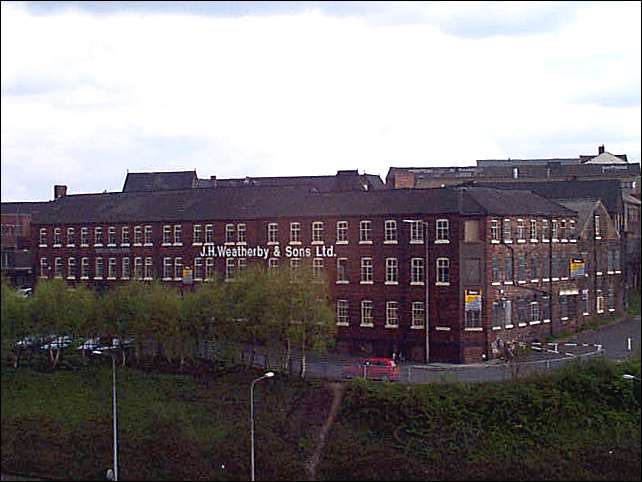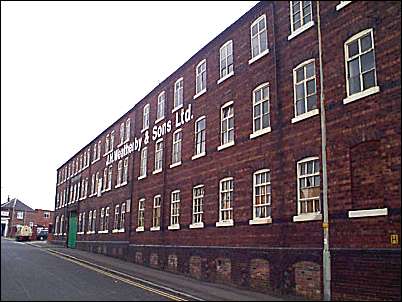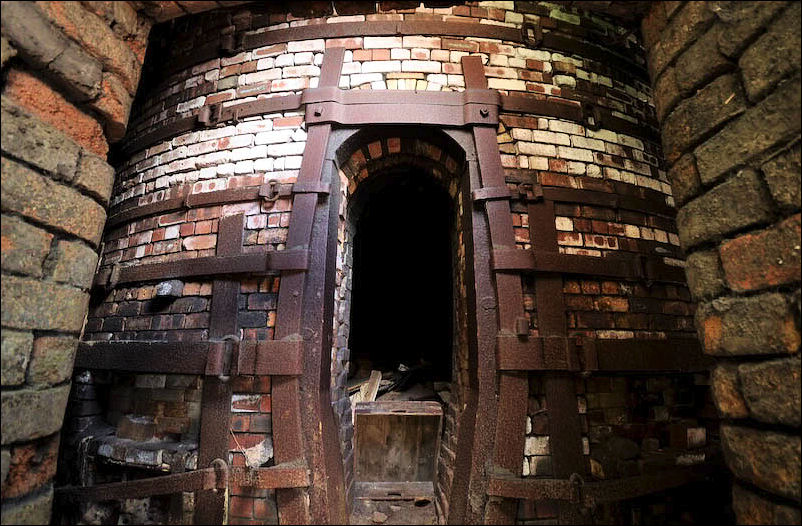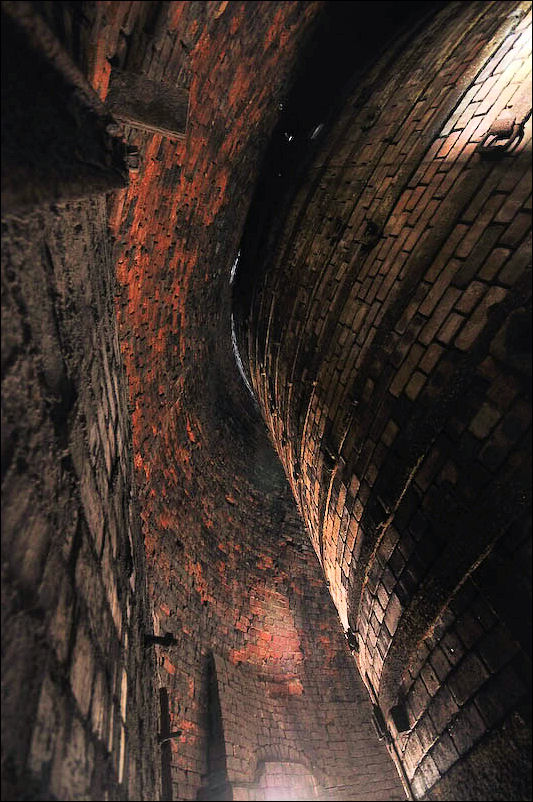![]()
|
|
|
|
|
Stoke-on-Trent - Potworks of the week |
Advert of the Week
Photo of the Week
Weatherby & Sons Falcon Works, Hanley
Messrs. J H Weatherby & Sons
established a small works at Tunstall in 1891.
In the following year they moved to the larger Falcon Pottery at Hanley.
Good quality earthenware tableware has been produced up to the present
time.
The marks include the initials J H W & Sons or the name 'Weatherby'.
From Jewitt's "Ceramic Art of Great Britain, 1800-1900"

Weatherby & Sons Falcon
Works, Hanley - 2008
no longer in operation

from a 1913 letterhead
|




Potters
updraught oven with squat circular hovel at
Weatherby Falcon Works -
built 1906

the inner kiln with the outer
hovel (which protected the kilns from the rain and weather)

broken saggers in the
kilns
photos: 'Dweeb' at 28dayslater
|

unfinished ware from the now
closed works
this cup was made in February 1974


Weatherby's Falcon Works
can be seen at the top left (bounded by Old Town Road)
The blue boxes show St. John's Church
on the left and
on the right the Upper Hanley pottery and Weatherby's
|
Over
100 years separates these two maps - but key features can still be found
on both maps |